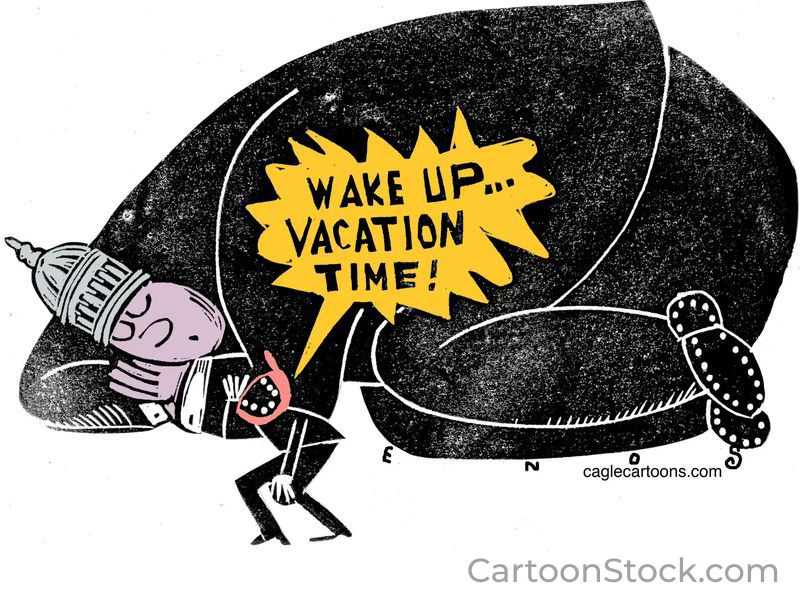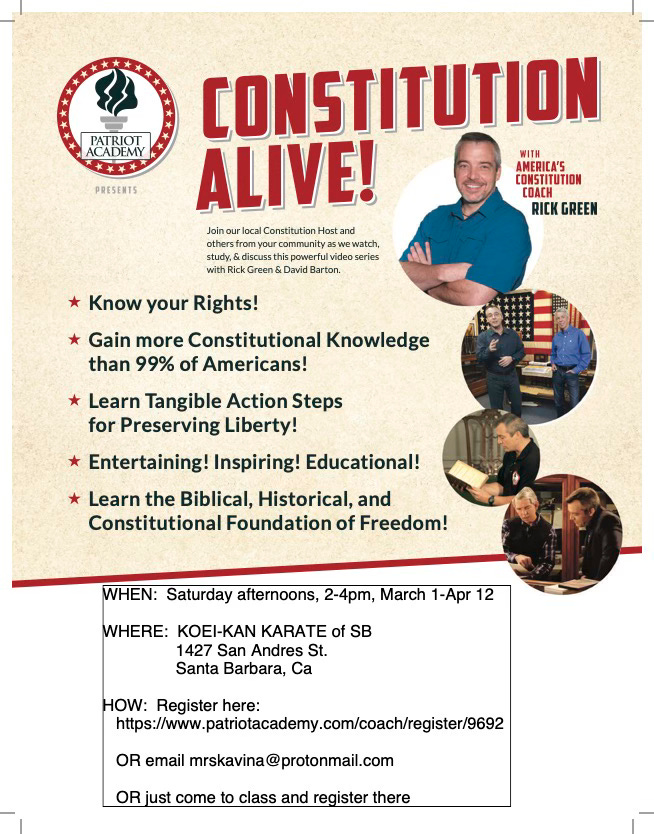Even if a holiday is on a Monday – City Council meetings are always on a Tuesday –, all the members take the opportunity to enjoy the “holiday” too. The City Council is “on vacation” this week… and will be again next week.
In a typical year, there are 52 Tuesdays, but after accounting for 17 Tuesday canceled meetings, this leaves 35 meetings, resulting in a cost of $94,000, which translates to $2,686 (per council member) per meeting. However, considering that some members may miss meetings due to vacations or illness, let's assume an average of two missed meetings per year.
This adjustment brings the total to 33 meetings, raising the cost per meeting to $2,848. When we multiply this figure by the seven council members—six at $94,000 and one at a slightly higher rate—the total cost to taxpayers per meeting amounts to $19,936. Consequently, the annual expenditure to the City of Santa Barbara for council members alone reaches $658,000, not including additional costs associated with staff time.
The schedule is designed to cancel meetings on the Tuesdays following holidays and to accommodate summer and winter breaks. For the 2025 calendar year, the Council proposes the cancellation of the following meetings: Tuesday, January 21 (after Martin Luther King, Jr. Holiday), February 18 (after Presidents Day), March 25 (Spring Break), April 1 (after Cesar Chavez Day), May 27 (after Memorial Day), June 24 (after Juneteenth), July 8 (after July 4th), July 15, July 22, and August 26 (all during Summer Break), September 2 (after Labor Day), October 28, November 4 (Election Day), November 11 (Veteran’s Day), November 25 (before Thanksgiving), December 23, and December 30 (both during Winter Break).
There are 52 Tuesdays in 2025 in which City Council could get city business done. Yet when you want to make sure you get your paid holidays and vacations in and throw in the fact that the city itself is closed every other Friday, it’s a wonder that any business gets done.
MEMO TO MAYOR ROWSE AND THE SANTA BARBARA CITY COUNCIL: Enjoy your days off, but first OPEN UP STATE STREET!
Since the City Council is currently “on vacation,” it allows us to respond to a reader's email.
From a reader:
“Bonnie, did you read this?
“How many people who are unable to afford a home in Santa Barbara should our residents be required to support? There are other more affordable places. Many rural communities would have the same demographics as those waiting for our taxpayers to pick up their tab.
“Underserved my foot!
“From the article in Noozhawk (listed above)
“Right now, there are 7,732 households on the wait list for Section 8 vouchers. In 2024, the city’s Housing Authority issued 152 vouchers.
“Going into March, the Housing Authority had 2,477 vouchers leased. Housing Authority agencies throughout the state are experiencing a shortfall.
“We will not be reissuing allocated vouchers for the foreseeable future until such time as the agency brings the level of issued-leased vouchers in alignment with the funding allocated by Congress,” Executive Director Rob Fredericks wrote in a letter to tenants and others.
“Fredericks told Noozhawk that no existing housing contracts will be canceled.
“’Our primary responsibility is to ensure housing stability for the families we currently serve,’” Fredericks said. ‘This pause will allow us to bring our issued voucher levels into alignment with our congressional allocation while also positioning us to apply for HUD’s supplemental shortfall funding.’”
I consistently get quick responses from Rob Fredricks at the SBHA whenever I email him, so I sent him a message, which is included below.
(My questions are in italic; Rob’s answers are in bold.)
On Wednesday, March 26, 2025, at 10:30:26 AM PDT, Rob Fredericks wrote:
Hi Bonnie,
See my answers below.
From: BONNIE DONOVAN
Date: Tuesday, March 25, 2025, at 9:03 PM
To: Rob Fredericks
Subject: Some questions
Hi Rob, if you can answer some questions, Please.
In your Independent article...
Are all your tenants on section 8?
No, not all of our tenants are on Section 8. Our agency owns and manages 1,478 housing units throughout the City. Of these units, 863 have additional rental assistance through Section 8 Housing Choice Vouchers. The majority of these 863 units with voucher funding are allocated under a HUD voucher-funding model resulting from our conversion of the public housing program several years ago.
How many tenants do you have?
We own and manage 1,478 housing units
Is that total considered a lease or is that actual people living in your units?
The figure provided represents the number of households, not the total number of individual tenants living within those units.
How do you calculate your tenant's income (so they pay their 30% rent).
Tenant rents under the HUD Housing Choice Voucher (Section 8) Program are calculated based on the household’s total adjusted annual income. Each tenant typically contributes about 30% of their adjusted monthly income toward rent. Our calculations follow strict HUD guidelines:
Annual Income: We consider all income sources for household members aged 18 and older, including wages, salaries, Social Security, regular contributions, and other periodic payments.
Adjusted Income: We subtract HUD-authorized deductions from the annual income, such as allowances for dependents, elderly or disabled individuals, medical expenses, childcare costs for employment or education purposes, and disability assistance expenses.
Tenant Contribution: Tenants pay approximately 30% of their adjusted monthly income as rent. The Housing Authority covers the balance up to HUD’s payment standard directly to landlords. Income verification is conducted annually to ensure accuracy and compliance.
How do you calculate their cash jobs?
The Housing Authority requires tenants to report all income, including cash or self-employment income, in accordance with federal guidelines and our Administrative Plan. Verification methods include:
· Self-Certification: Tenants must provide written statements detailing cash earnings and frequency.
· Third-party Verification: Whenever possible, we verify income directly with employers or payers.
· Document Review: Tenants must present documents such as receipts, invoices, bank statements, or financial records when third-party verification isn't possible.
· Income Analysis: In cases where documentation is insufficient, we estimate income based on comparable industry standards and local wage data.
· Self-Certification: Tenants must provide written statements detailing cash earnings and frequency.
Our agency maintains rigorous oversight to ensure income reporting accuracy and to prevent fraud. Failure to accurately report income can result in repayment requirements, loss of assistance, or legal consequences.
That's a start, there might be a few more.
Thank You
Bonnie
Caution: This email originated from a source outside of the Housing Authority of the City of Santa Barbara. Do not click links or open attachments unless you verify the sender and know the content is safe.
Let’s Do The Numbers
The Santa Barbara Housing Authority manages 1,478 units, which include various configurations such as five-bedroom, four-bedroom, three-bedroom, two-bedroom, one-bedroom, and studio apartments. To estimate the number of individuals housed, we can assume an average of three people per unit. Multiplying 1,478 by 3 gives us approximately 4,434 residents.
Additionally, as of March, there are 2,477 Section 8 vouchers leased. Using the same average of three individuals per voucher, this results in around 7,431 people. Furthermore, the waiting list consists of 7,732 applicants, which, when multiplied by three, amounts to about 23,196 potential residents. In total, this brings the estimated population associated with these housing resources to 35,061.
With a total population of 84,990, this means that 49,929 individuals would be contributing to housing costs. Dividing these households by an average of three yields approximately 16,643 property owners who are supporting local services through property taxes.
Considering the overall population of 84,990, the 35,061 individuals receiving assistance represent a significant portion.
Dividing 49,929 individuals into their housing unit by the same 3, we find that roughly 16,643 property owners are actively participating in this system.
With 16,643 households contributing to property taxes that support essential services such as education, public safety, we again see why the city council pushed for the additional sales tax.
Speaking of this sales tax, it starts next month.
While I am committed to assisting seniors, individuals with disabilities, and veterans, I am concerned about the influx of homeless individuals into Santa Barbara. If we continue to allow people from outside the area to access taxpayer-funded housing, we risk neglecting our most vulnerable populations, including seniors, the disabled, and veterans.
Follow-up is needed on the following:
“Of these units, 863 have additional rental assistance through Section 8 Housing Choice Vouchers.”
This section of his answer might change our calculations and will follow-up with Rob.
A reminder that all numbers are for the City of Santa Barbara alone and don’t include any County of Santa Barbara numbers.






What a mess we’ve created.
We’ve got the government we voted for. Let me correct that statement. We’ve got the Government the unions selected.
Ah, the perks of government. You don’t have to work to get paid.
But what’s the point, they just do as they are told before a meeting ever occurs.
Meetings are just a dog and pony show.
Do you think they actually listen to the public?
Like SBUSD board. The meetings are obligatory to stay in compliance the law.
No decisions are affected by the meetings.